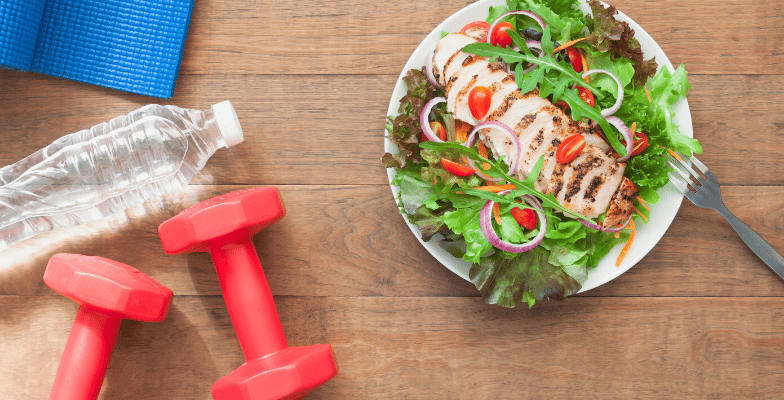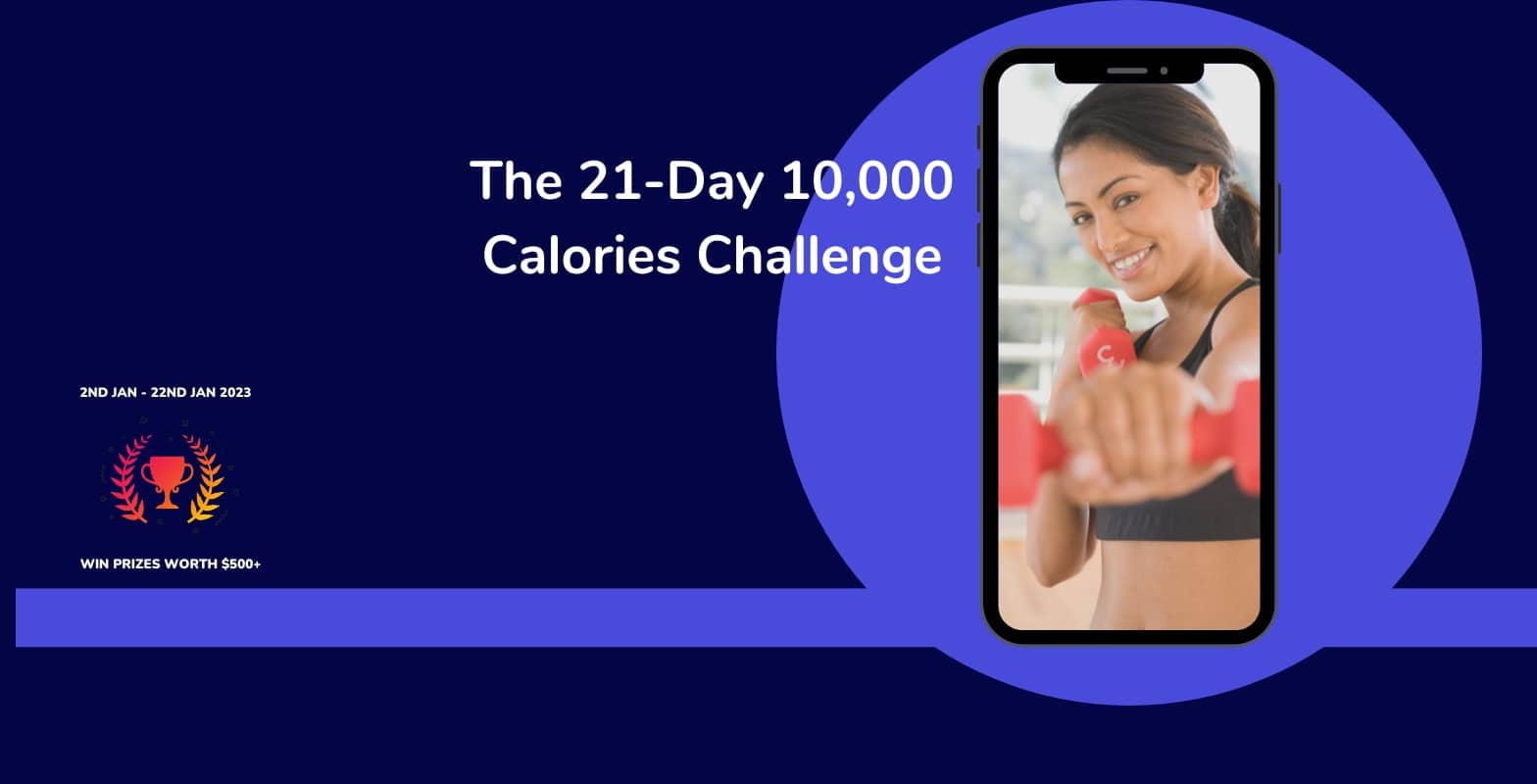Calories In Calories Out: CICO | Does it matter?
- Introduction
- What Is Energy Balance?
- Why CICO Is Not As Simple As It Looks
- How To Make CICO Work For You
- Final Thoughts

Introduction
If you have tried losing weight before, your weight loss coach probably recommended counting calories and eating 10-30% less than your TDEE.
In fact, in all my nutrition certificate courses, ‘Calories in, Calories out’ (CICO) is one of the fundamental concepts I teach regarding weight management. So, if CICO is so fundamental, why do many health and fitness experts advise against counting calories?
To clear up the controversies and provide you with an overall perspective, I have penned this article.
What Is Energy Balance?
Energy balance is the difference between energy intake (calories in) and energy expenditure (calories out). When energy intake is more than energy expenditure, you gain weight. The body stores the extra calories as fat. When energy intake is less than energy expenditure, you lose weight.
Energy Intake (Calories In)
The macronutrients in foods i.e., carbohydrates, proteins and fats, contain calories.
A gram of carbs = 4 calories
A gram of protein = 4 calories
A gram of fat = 9 calories
A gram of alcohol = 7 calories
Our brains, our muscles, and every cell in our bodies require energy to function in their optimal state.
Energy Expenditure (Calories Out)
One’s metabolism and activity burn calories, comprising energy expenditure, i.e. calories out. There are three components of human metabolism:
Basal Metabolic Rate (BMR)
Basal metabolic rate is the amount of energy, expressed in calories, that a person needs to keep the body functioning at rest.
Thermic Effect Of Food (TEF)
The thermic effect of food is the caloric cost of digesting and processing different macronutrients in your diet. The most common estimate for the total thermic effect of food is around 10% of your BMR.
Thermic Effect Of Activity (TEA)
The thermic effect of activity is the calories you burn through activity, i.e. your training and workouts. I discuss all these components in detail in the article on TDEE.
Related Article: TDEE Definition: Total Daily Energy Expenditure
Why CICO Is Not As Simple As It Looks
Calories in, calories out is a fundamental concept in nutrition, diet planning, and weight management. In theory, CICO is a straightforward concept. Many experts will tell you to ‘eat less and move more‘ if you want to lose weight.
However, when it comes to real-world applications, it’s a different story altogether. Many of my clients have complained that even after being in a calorie deficit, they cannot lose weight.
So, let me share three main pointers you should take care of when using CICO to lose weight.
1) Most People Overestimate Calorie Expenditure
As discussed above, energy expenditure comprises BMR, TEF, and TEA. Of the three, the thermic effect of activity (TEA) is often overestimated. The formula to calculate TEA = BMR x Activity Multiplier
Let’s look at the activity multipliers
-Sedentary = BMR x 0.2 (little or no exercise, desk job)
-Lightly Active = BMR x 0.375 (light exercise/sports 1-3 days/week)
-Moderately Active = BMR x 0.55 (moderate exercise/sports 3-5 days/week)
-Very Active = BMR x 0.725 (hard exercise/sports 6-7 days/week)
-Extra Active = BMR x 0.9 (hard daily exercise/sports and physical job or training twice a day, i.e., training for a marathon, contest, etc.)
I discuss the details of each level of activity in the TDEE article shared above. If I take myself as an example, I do moderate-to high-intensity weightlifting. I combine it with 3-4 HIIT bodyweight sessions every week. My step count averages 7,000 steps per day or around 50,000 steps per week.
With this lifestyle, I place myself in a moderately active category. If my BMR is 1,800 calories, then my TEA= 1,800 x 0.55= 990 calories.
What if I overestimate my calorie expenditure and decide to place myself in the ‘very active’ category with the same lifestyle?
Then my TEA= 1,800 x 0.725= 1,305 calories. Therefore, I have overestimated my activity burn by 315 calories!
2) Most People Underestimate Their Calorie Intake
This is an even bigger problem than overestimating calorie expenditure! Try and estimate the calories in the following meals.
Mc Donald

Indian Thali

Pasta

When it comes to junk and fast foods, there are many hidden calories an average person is not aware of. In addition to these main meals, many people snack throughout the day. Small snacks can amount to quite a lot over time and add to total calorie counts.
In my experience spanning 15+ years, I can say with reasonable confidence that most people underestimate their calorie intake by an average of ~500 calories daily!
One pound of body fat has 3,500 calories. And if one proposes to lose this much body fat per week, they would be required to create a calorie deficit of 500 calories per day (500 x 7=3,500).
If most people underestimate their calorie intake by ~500 calories and overestimate their calorie expenditure by ~300 calories, how on earth do you think they would be able to lose even a single pound?
3) CICO Does Not Take One’s Hormonal Profile Into Account
Not all calories are created equal! Food is information to your cells. One hundred calories of broccoli will have a very different effect than 100 calories from candy. Yes, it’s true that even the worst calorie-deficit diets can trigger a fat loss in the short term.
Example 1) A teacher lost 56 lbs eating nothing but McDonald’s, and people are pissed! 1https://niashanks.com/teacher-lost-weight-eating-mcdonalds/
Example 2) Twinkie diet helps nutrition professors lose 27 lbs. 2https://www.latimes.com/archives/la-xpm-2010-dec-06-la-he-fitness-twinkie-diet-20101206-story.html#:~:text=Twinkie%20Guy%20%E2%80%94%20also%20known%20as,fewer%20calories%20than%20he%20burned.
Now, these are extreme examples, and I don’t endorse this approach.
I repeat, these are extreme examples, and I don’t endorse this approach.
I am simply trying to restate the fact that the calories in, calories out concept matters and is very effective for anyone trying to lose weight. Having said that, it’s also of paramount importance where those calories are coming from, especially in relation to your health.
In the end, it’s not just about losing weight; it’s about becoming healthy too! Excessive sugar and refined carbohydrate calories found in junk foods can increase the risk of insulin resistance.
Insulin resistance significantly increases the risk of developing type 2 diabetes. 3https://www.ncbi.nlm.nih.gov/books/NBK507839/ Excessive intake of polyunsaturated (omega-6) fats via vegetable oil consumption is pro-inflammatory and promotes oxidative stress.
Junk/fast foods are not only loaded with a lot of calories, but most of them are empty calories. The term ’empty’ means these calories have very little or no nutrients in them. For example, pizza contains some nutrients like calcium and protein in cheese, but other foods like candies and soft drinks contain only empty calories and no nutrients.
Carbohydrates are refined and processed, proteins are denatured, and fats like trans fats are unhealthy. The refining and processing of junk/fast foods result in significant losses in vitamins, minerals, fiber, and phytonutrients.
That’s why it is imperative to get most of your calories from unprocessed foods like complex carbohydrates, quality protein from grass-fed meats or perhaps vegetarian sources like lentils or beans, and healthy fat sources like coconut oil and ghee.
How To Make CICO Work For You
CICO is very important when it comes to losing weight. Most people oversimplify it and wonder why they don’t lose weight even though they ‘eat less and move more.’
Let me give you four specific instructions on how you can apply CICO in a holistic manner that not only makes losing weight easy but also helps you optimize your health. What’s the point of losing weight when you don’t feel well?
1) Be Conservative When Selecting Your Activity Multiplier
You can take my activity levels as a benchmark. No matter how hard I work out (and trust me, my strength training sessions are quite intense), I always choose the moderately active range. I never select the very active range because of my overall sedentary lifestyle.
My work is online, and it requires me to be in front of the computer at least eight hours per day, 350 days a year, even though I take frequent walking breaks and strive to achieve a step count of 7,000 steps per day.
I also stand at least 30-40% of the time while I’m working. Even so, I am conservative when selecting an activity multiplier, and it has worked very well for me. When in doubt, choose the lower activity multiplier and start from there.
2) Start Counting Calories
I am aware this topic requires another article in itself, as it is as controversial as the current topic. This is because about 50% of experts advise against counting calories.
Instead, they ask you to rely on portion control or intuitive eating (like eating until you are 80% full; good luck with this :)).
Every approach has its pros and cons. For now, know this: If your goal is body recomposition, i.e. fat loss and/or muscle building, I strongly recommend you start counting calories.
When you do, there is a very high probability that, over time, you will stop underestimating your calorie intake, which will make losing weight simple.
3) Eat At Least 80% Of Your Calories From Whole Foods
As we have learned, food is information to our cells. The type of food you eat affects your hormone functioning, metabolism, digestion, and absorption of nutrients. Avoid foods that have an ingredient list; instead, consume foods that are the ingredients themselves. 🙂
Focus on eating nutrient-dense foods like lentils, beans, whole grains, whole dairy, coconut products, nuts, fruits, and vegetables. These wholesome foods are loaded with fiber, probiotics, vitamins, minerals, and phytonutrients.
Eating nutrient-dense foods will help curb hunger and cravings, which are hard to keep a check on, especially on a calorie deficit diet. For example, when I eat a whole egg omelet or oats for breakfast, my cravings and hunger are in check for at least 5 – 6 hours!
However, people who eat a not-so-healthy breakfast like cornflakes with skim milk or orange juice from concentrate and white bread with margarine spread will experience a blood sugar crash within an hour or two.
This is because these foods are highly processed, loaded with added sugar, and have a high GI value, causing a sudden rise in blood sugar, followed by a sudden drop.
Related Article: What Is Glycemic Index | Food List With Glycemic Index
4) Monitor And Track Your Progress
It’s important to note that losing weight is not a static process but a dynamic one.
For example, say your current weight is 180 pounds, and you want to drop 20 pounds. We know that BMR is a function of one’s body weight. Your BMR will be ~1800 calories. Your TDEE calculations will be based on your current weight, i.e. 180 pounds.
If, within three months, you lose 15 pounds, it’s essential to adjust your BMR and, therefore, your TDEE. Your BMR will be 1650 calories when you weigh 165 pounds, and your TDEE must be adjusted accordingly.
How to monitor and track your progress is an entire topic that I detail in my course Certificate in Diet Planning.
Related Course:
Final Thoughts
The calorie equation is evidence-based, and it works! It has worked very well for hundreds of clients I have personally counseled and for me. It’s the most fundamental concept when it comes to losing weight. In theory, it’s relatively straightforward.
Eat Less Than Your Body Burns, And You Will Lose Weight.
However, the real-world application of CICO can get rather cumbersome! But if you follow the points discussed in this article, you will lose weight quite effectively too.
Calories In
McDonald’s Meal: 920
White Sauce Pasta: 520
Homemade Indian Thali: 390
What do you think about this article? Have any questions? Let me know in the comments below!

Skill-Based Education.
Global Recognition.
Powerful Community Building
Secure a certificate of completion in as little as a day by graduating from one of our free courses.
Get Access to Our Free Courses. No Credit Card Required.

Fabulous Body Membership
Your All-Access Pass to A Fabulous Body & A Rewarding Career
25+ Certificate Courses & Programs, All Included
15 Day Free Trial, 100% Money-Back Guarantee
About Akash Sehrawat
Akash is a creator of 25+ programs and certificate courses in which more than 200,000 students have enrolled both on Udemy and Fabulous Body's native platform. Akash is also an author of three books that can be found on Amazon. His answers on Quora have gathered more than 12 million views in less than a year.












Could have done with a bit more detail on the role of insulin
Hi, Akash.
I was looking for all the resources for learning nutrition and I could find you in udemy.
This article CICO is really very useful. I had 2 questions.
1. Is it ok to depend on online for calculating the BMR like https://www.calculator.net/calorie-calculator.html
2. How to measure the calories of food at home. I have seen some people using a weighing machine to calculate each portion of what they eat. Is it the only way for me to know how many calories I have consumed?
Rohit
Hi Rohit,
Thank you for your kind words.
To answer your questions,
1. Yes, it is a great idea to use online calculators to figure out your TDEE. It simplifies things. We have one ourselves on our website. https://fabulousbody.com/free-tdee-calculator-%E2%80%8B-how-to-calculate-tdee
2. Weighing your food is the first step, once you know the weight of your food ingredient, you can use a calorie calculator software like Chronometer or Myfitnesspal etc., to check the number of calories as well as the macronutrients in that particular food.
That’s how we know how much we’re eating.
The macros and calories in 100g chicken breast and 100g avocado are very different, best checked with a tool.
Regards,
Kunal,
Team Fabulous Body